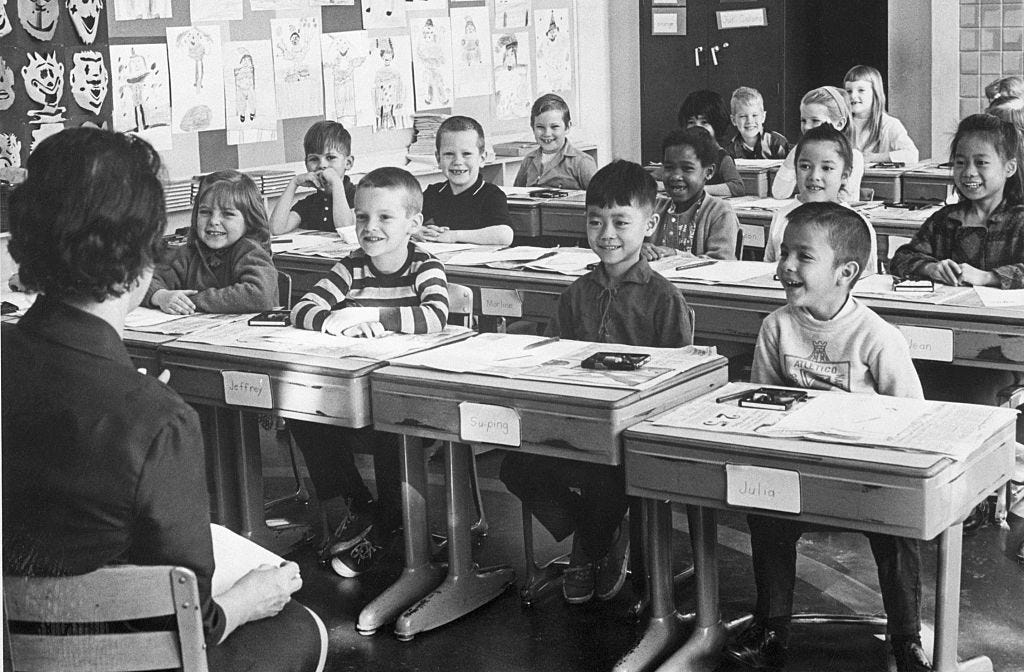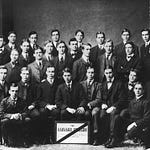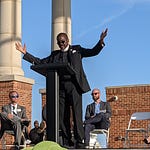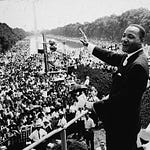
The seven-minute audio clip above is from last evening’s broadcast of Weekend All Things Considered, on NPR, and is used with NPR’s permission. In it I am talking with the host, Michel Martin, about a subject of long-standing interest to me, which has also come very recently into the news.
—The long-term topic is the highly pernicious school-ranking racket, which I wrote about last month and have dealt with for years. For instance, in this Atlantic article from 2001, and this from 2009. I also confronted it directly 25 years ago, during a two-year stint as the editor of US News, which of course has been a pioneer in the rankings business.
—The recent news is the incredible-but-true decision by that same US News to expand its list of supposedly “best” institutions from colleges and universities, to grade schools.
That’s right: No longer need you be satisfied with finding out which among Harvard, Yale, Princeton, and Stanford has supposedly “pulled ahead” of its rivals to get the #1 spot this year. Now you can also see how your local grade school is supposedly going up or down the reputational ladder against hundreds or thousands of others in your state.
Because human beings can’t resist gimmicks, naturally I had to check how my own schooling matched up. For the record, the neighborhood school where I started first grade long ago is supposedly the 2,143rd-best in the state of California. We’re Number 2,143! My public high school in the same city is supposedly the 213th-best in the state, and 1,427th-best in the country as a whole.
Do any of these numbers mean anything? No. They do not. They are pseudo-science; they are spuriously precise; they have only the vaguest connection to the setbacks, the achievements, the lives and prospects of the students and teachers in these schools.
But because human beings can’t resist gimmicks, numbers like these will have an effect. Imagine how they will be used by real-estate agents, by school board members, by anxious parents who may bring yet more demands to grade-school teachers and principals.
Will they help any teacher, any administrator, any family with young children, any community? They will not. Might they add stress and distortion to all of the lives involved? If taken at all seriously, they could.
Improving K-12 education is one of the central, generations-long challenges of American life. As I discuss with Michel Martin, ever since the expansion of public schooling in the 1800s, Americans have struggled to make it both fairer (meaning, less dependent on rich-get-richer built-in advantages), and more effective (so children develop the intellectual, emotional, social, civic, and other skills that will give them the best chance in life.)
The years have passed; the trends and fads in education have come and gone; the testing schemes and emphases have shifted; the struggle goes on.
And absolutely nothing that will improve the lives of students, teachers, parents, or communities will be advanced by a nutty new index showing that they are 500-places “better” or “worse” than somewhere else.
The NPR clip goes into several of these factors, including:
The difference between ratings, which can give you sense of how schools are doing by different measures, and can be tools of accountability; and rankings, which are based on the concept of a precise “I am better than you” hierarchy. Rankings make sense when, for instance, you are assigning seeds for Wimbledon. In most of the rest of life, they don’t.
The business logic of these rankings for US News and its imitators. People love gimmicks.
The way selective-college admission has become one more “positional asset”—something I have, that you don’t.
The overwhelming majority of U.S. colleges and universities, like the even vaster share of U.S. grade schools and high schools, are not “highly selective” in admissions. Most people who apply, get in. But the handful of most sought-after institutions have become one more arena for status competition—as I describe more fully here and here.The way that rankings distort what is best and most admirable about U.S. higher education: its range, its diversity, the reality that for most students, there will eventually be a “right place.” It could be a military academy; it could be a community college; it could be an HBCU; it could be local; it could be far away. That’s the expansive variety of the U.S. system, which is unique in the world. A ranking list flattens and shrinks it.
Additional points, from the outtakes
There were several more points I discussed with Michel Martin, which didn’t make it into the (quite generous-length) on-air segment. For the record:
The rigors of the news magazine business. When I was editor of US News, it was the smallest and most challenged of a three-entrant news magazine field. The others were Time, then dominant, and the scrappier, edgier Newsweek. Against these rivals, the rankings business was a crucial part of US News’s survival strategy.
Now Time still exists as a print magazine. Newsweek has gone off on its own trajectory. And US News is essentially a rankings company with a news magazine name. Its ranked lists cover everything from “Best Hospitals” to “Best States”—by which I mean, the likes of Kentucky-vs-Montana.
This is a very tough segment of a very tough industry. All entrants are doing what they think they must, to survive.
But…What is good for a business, is not necessarily “good.” With Michel Martin, I used an analogy to Facebook:
The heart of recent complaints about Facebook is that what’s best for the company can end up being worst for societies. (See also: tobacco companies through the 1900s; Purdue Pharma more recently; cable-news channels in 2015 and 2016, when drawing big audiences with wall-to-wall coverage of rally speeches by Donald Trump.) Facebook has learned that people spend more time online if they are angry. It’s better for Facebook if people are riled up. But it’s worse overall.
By analogy: It’s better for publications to have a new ranking gimmick. But it’s worse overall.Do these rankings “matter”? Indeed they do. I have heard from a financial officer of a very well-known private university, who said that the school’s bond rating, for long-term improvements, went up or down in pace with its (meaningless) position in the US News rankings. Several college presidents have told me about ultimatums from their governing boards: go up so many places in the US News rankings, or look for another job. These stories are legion. Numerical rankings should not “matter.” But they do.
“But what about you?” During my very first days at US News, I received a detailed, starchy letter from the then president of Stanford, asking me to dump the rankings altogether. You can read about it here. I later met with a delegation of more than a dozen university presidents, and many student leaders, to the same effect.
For the business reasons I mention, it just was not “realistic” for US News to abandon rankings. The heart of its “business” would have gone away. But over two years we tried in various ways to “improve” the rankings—or, as I thought of it, to “defang” them.
Amy Graham, who worked with me on these projects at US News, described the process in a seminal article for The Washington Monthly twenty years ago. It’s here. For the record, her co-author on that article was Nicholas Thompson—whom I’d met when he was part of a college-student delegation protesting the rankings in the 1990s, and who in 2001 was a Washington Monthly editor, and who now is the CEO of The Atlantic.What’s the answer? Michel Martin asked this as the final question. My response boiled down to:
- For colleges and universities, the ship has already sailed. Rankings aren’t going away. The best thing you can do is to dilute the influence of any one ranking system, by adding much more complexity and different facets to the system. As The Washington Monthly has led the way in doing.
-But for K-12 schools, just stop. This way lies madness.
Just stop. (But before stopping, listen to the NPR clip!)













Share this post